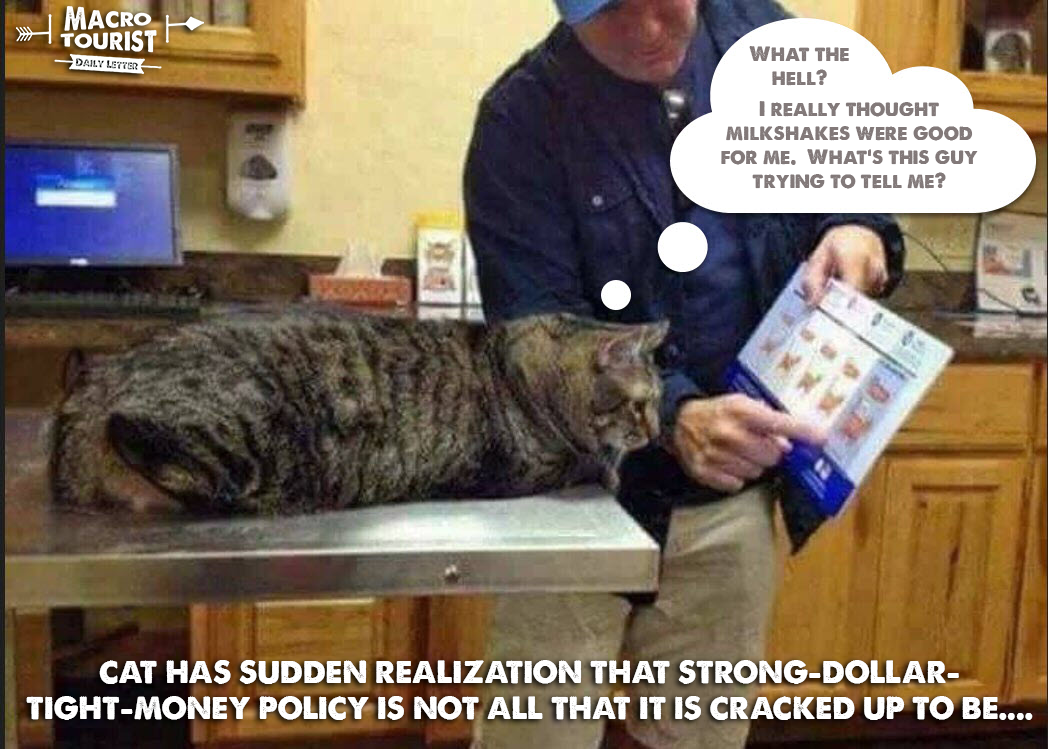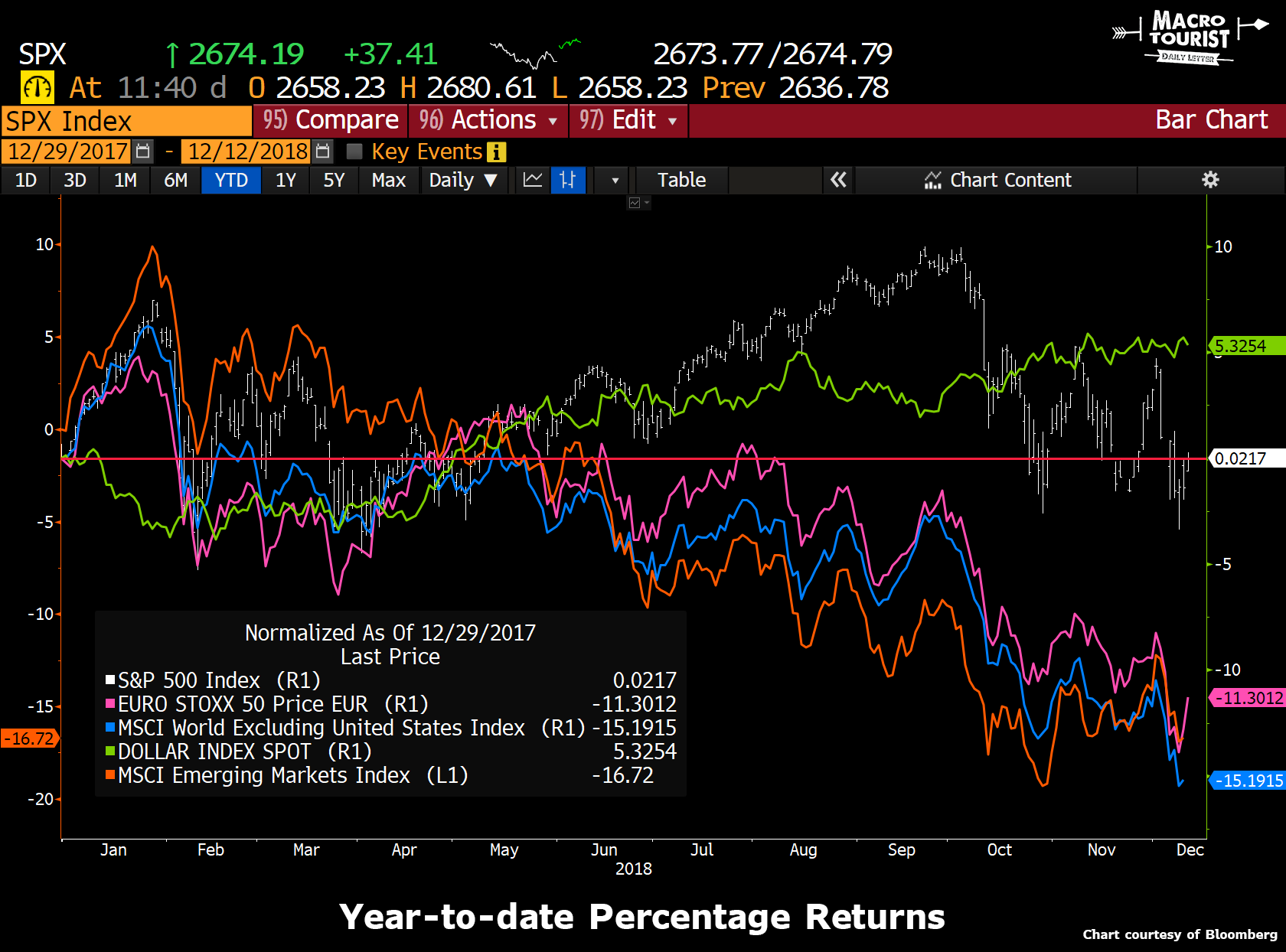2018-12-12 3pm EDT | #US dollar #Santiago Capital #Brent Johnson #stocks
Think back to this past summer. The US dollar was rallying hard, having risen from 88 DXY in the spring to 97 as August drew to a close. At the same time, the American stock market was on fire, tacking on 400 S&P points in less than half a year. This was happening while the rest of the world’s stock markets were sucking wind. Europe was down a handful of percentage points, the MSCI world index ex-US was down a similar amount and emerging markets were being beaten like Marvin Nash at the hands of Mr. Blonde[1]. In the period when the S&P had risen almost 10 percent, emerging markets were pushing down 15%. When you combine the meteoric US stock market rise along with the USD appreciation, the relative outperformance of US equities for overseas investors was stunning.
I understand all the reasons for the move. America was the only major country engaging in fiscal stimulus. They were also cutting taxes and engaging in pro-business deregulation. These policies allowed the U.S. Central Bank to pursue a tighter-than-would-otherwise-be-the-case monetary policy.
All of these circumstances combined to create a virtuous self-reinforcing feedback loop. As foreigners chased U.S. stocks, it put a bid to the U.S. dollar and also loosened financial conditions which caused the Federal Reserve to tighten policy which caused the U.S. dollar to rise even more and encouraged foreigners to buy even more stocks. It became reflexive[2].
Wall Street always does this. They take a good idea, and they push it too far. The US-will-eat-the-world financial theory made a lot of sense… at first.
I am about to embark on a reason...



